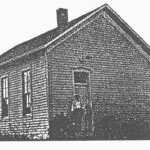“Out of an acreage of over twenty-two million acres,” wrote Charles Deam in 1920, “there are now over two millions of reasonably good woodland remaining.”
It was in response to the decimation of Indiana’s forests that the botanist from Bluffton devoted himself to cataloguing and preserving what remained. The legacy of Indiana’s first state forester includes not only the Charles C. Deam Wilderness in the Hoosier National Forest and Clark County’s Deam Lake State Recreation Area, but an important piece of legislation that kept the forests from retreating even farther.
Charles Clemon Deam was born in 1865 to a farm family in northeastern Indiana, and attended DePauw University for two years before leaving to pursue employment as a pharmacist and an avocation in botany. The plants that he collected on his walks became a herbarium comprising at least 63,000 specimens, now housed at Indiana University.
A member of the Academy of Sciences in Indiana, Deam’s botanical efforts were noted when Indiana governor Thomas Marshall formed the State Board of Forestry in 1909, and named Deam to head it. He held the position until 1913, and was reappointed for a second term from 1917 through 1928.
In the newly established Clark State Forest, where Deam was stationed, the naturalist observed how relentless harvesting of old-growth forests since the early nineteenth century had led to wide-scale erosion.
His ecological studies convinced him to draft the Forest Classification Act of 1921 (House Bill 77), which exempted farmers from taxation of the forested land they owned. The act effectively made it fiscally advantageous to retain land as forest instead of farming or logging every available acre. 2000 privately owned tracts of forest were set aside in the 25 years that followed the passage of the law, which served as a model for similar legislation in other states.
Deam recorded Indiana’s plant life in a series of books published between 1924 and 1940—The Shrubs of Indiana, The Trees of Indiana, The Grasses of Indiana, and The Flora of Indiana.






















